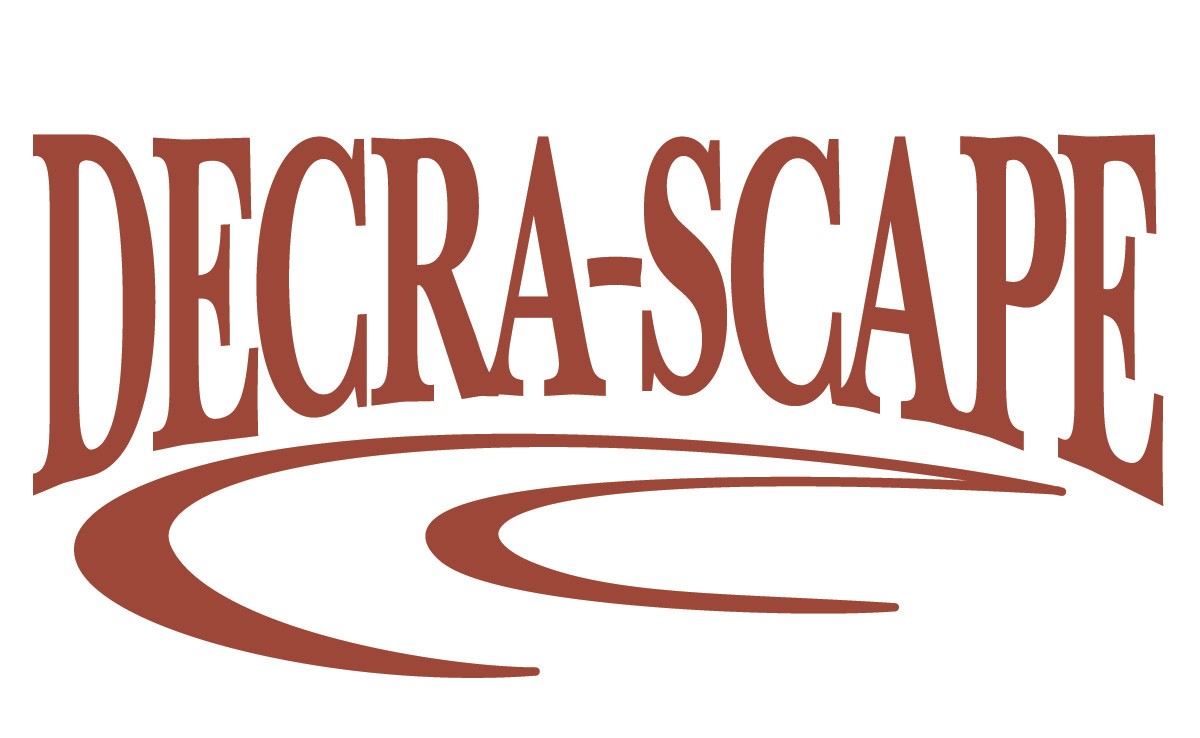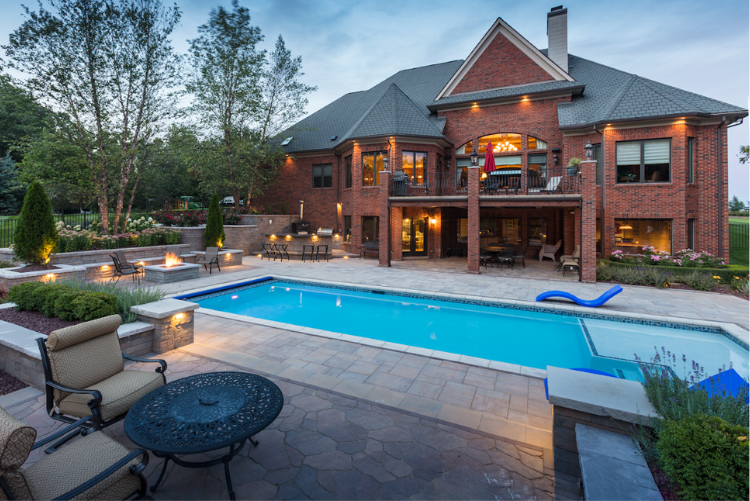Imagine you're remodeling your backyard, excited to transform it into a vibrant outdoor living space. After some consideration, you decide to install pavers—but not just any pavers: you want materials that perfectly complement the red brick exterior of your home.
As you browse through various options, you realize how crucial this color choice is. Each shade and material offers a distinct mood and aesthetic, from the earthy tones that echo the natural landscape to bold, sophisticated blacks that make a standout statement.
For red brick houses specifically, choosing paver colors that complement or contrast with the rich red tones of your brick is a significant—and not altogether easy—choice. It’s one that can enhance the overall aesthetic of your outdoor space, but with the strong statement your brick already makes, selecting the right pavers can be challenging. Here are a few recommendations:
1. Gray Pavers
Gray pavers are a popular choice for red brick houses due to their neutral, understated elegance. They provide a modern look that doesn’t compete with the strong character of the brick but instead complements it.
Grays can range from light silver tones to deeper slate colors, each providing a different level of contrast and sophistication. Pairing gray pavers with metallic or glass accents in outdoor furniture can enhance the upscale aesthetic.
2. Charcoal or Black
For those seeking a dramatic flair, charcoal or black pavers offer a bold contrast that is both striking and elegant. These darker shades help define spaces like driveways and pathways with clarity and precision.
Incorporating elements like stainless steel features or white decorative stones can further accentuate this contrast, helping the red brick stand out while maintaining a high-end feel.
3. Sand-Colored Pavers
Sand-colored pavers are an excellent choice for brightening outdoor spaces and creating a soft, inviting contrast against red brick. This color, reminiscent of beach sand, imparts a classic and timeless look that is versatile and appealing.
Complement these pavers with lush green landscaping and floral arrangements to enhance their natural beauty and create a serene outdoor retreat.
4. Brown Pavers
Brown pavers are ideal for harmonizing with the warm tones of red brick. Choosing a shade of brown that is either significantly lighter or darker than the brick can add depth and interest to your landscape without overwhelming the senses.
This color choice works well with wooden accents or bronze outdoor fixtures, adding to the earthy, cohesive outdoor environment.
5. Red or Terracotta
While matching red or terracotta pavers with red brick might seem redundant, selecting a shade that is distinctly darker or lighter can accentuate the brickwork without overpowering it.
This approach can achieve a harmonious but distinct look, especially when paired with greenery and natural wood elements. The result is a warm, welcoming atmosphere.
6. Multi-Colored Pavers
Multi-colored pavers that incorporate shades of gray, brown, and red can effectively tie the color of the brick into the broader landscape design.
This option provides a cohesive and integrated look that connects the architecture of the home with its natural surroundings. Multi-colored pavers are particularly appealing in eclectic or cottage-style gardens where variety and color variation are celebrated.
Avoid Green
When choosing paver colors for a red brick house, it’s generally a wise move to avoid the color green. While this might seem like a natural choice for outdoor spaces due to its prevalence in nature, green can clash dramatically when placed directly next to red brick, or as a paving option around it.
Red and green are complementary colors on the color wheel, which means they are opposites and create a high contrast. This contrast can be visually jarring in larger applications, such as pavers, where the goal is to complement the home’s exterior rather than compete with it.
Green pavers can also detract from the warmth and natural beauty of red brick, creating a “separated” look. Instead of enhancing the red brick, green can overpower it, making the outdoor space feel disjointed and less welcoming. Vibrant or even muted tones of green could disrupt the aesthetic flow from the natural red brick to the landscaped environment, leading to a clash of styles and colors.
In outdoor design, it's typically more effective to use green in the landscaping itself, weaving the color into your landscape through natural plants and foliage rather than via hard surfaces like pavers. This approach allows the green to act as a backdrop or accent, enhancing the red brick's warm tones rather than conflicting with it.
Opting for neutral or complementary colored pavers, such as the grays, charcoals, sands, or multi-colored options mentioned above, will create a more cohesive and visually appealing outdoor space.
Consider the Mortar Color
When selecting pavers, remember to consider the color of the mortar in your red brick house. The mortar’s shade can influence how well the pavers complement or contrast with your home. And always view paver samples next to your brick in natural lighting, to accurately assess the compatibility of colors.
By thoughtfully selecting the color of your backyard pavers, you can enhance the beauty and appeal of your red brick home, creating a breathtaking outdoor space to complement your house. Whether you choose a subtle complement or a bold contrast, the right paver color can transform your backyard into a gorgeous and functional extension of your home.
If you're unsure which paver color is best suited to your red brick house, consulting with a professional hardscape contractor is an excellent first step. The team at Decra-Scape is here to help.
For more inspiration, check out our gallery of our work, read more on the blog, or catch up with us on Instagram.












